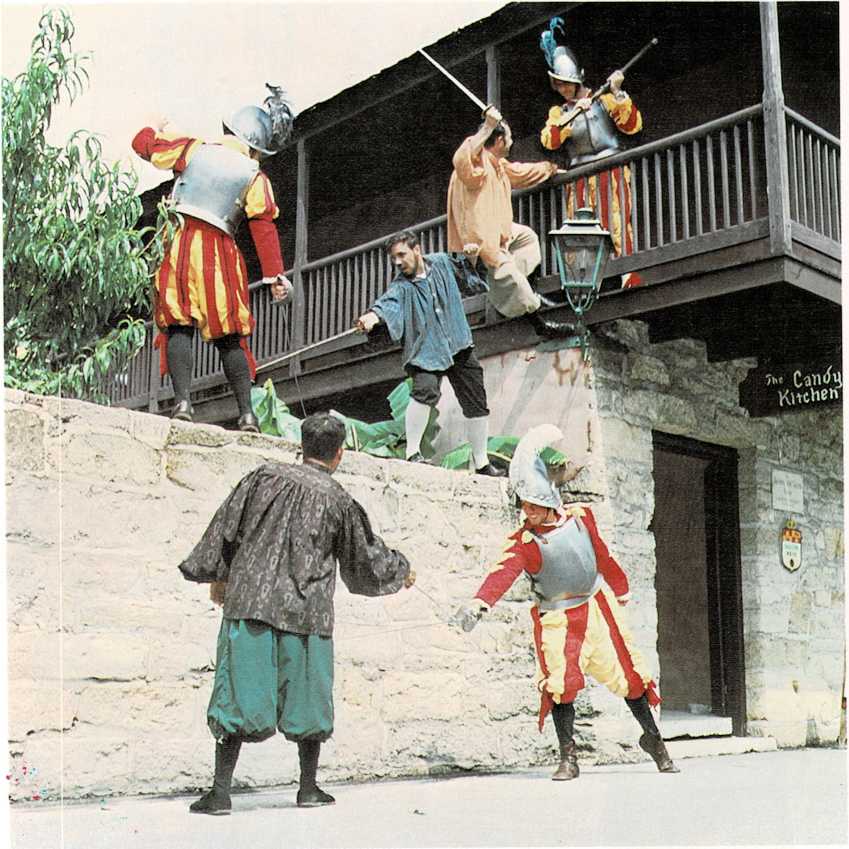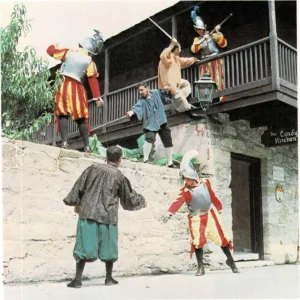Days in Spain
A shining salute
Every year, in August, the city of St. Augustine, Florida, has a
birthday party that lasts for four days. It is called \”Days in Spain,”
because the city was settled by people from Spain.
In 1565, the king of Spain sent Don Pedro Menendez de Aviles to Florida
to drive out the French. Menendez first saw the shore of the future city
on August 28, the feast day of Saint Augustine. After sailing north to
check on the French, Menendez returned to St. Augustine.
On September 8, 1565, with banners waving, trumpets sounding, and
cannons booming, Menendez claimed the land for Spain. He named the new
settlement for Saint Augustine.
The official birthday of the city is on September 8. But the big
celebration—Days in Spain—comes earlier, around the middle of
August. This makes it possible for more people to come to the party. At
this time of year, children are still out of school. So, they can ride
ponies, play games, and watch puppet plays while their parents also
enjoy the fiesta.
Musicians stroll along St. George Street, playing Spanish songs on
guitars and accordians. Castanets click as dancers do the flamenco, a
Spanish Gypsy dance in which there is much hand clapping and a great
deal of foot-stamping. And, of course, Spanish food is served.
On the last night of the fiesta, the candles on a huge birthday cake are
lighted. This birthday cake now has more than four hundred candles—one
for each year since 1565. The cake is a shining salute to St. Augustine,
Florida, the oldest city in the United States.
Spanish soldiers, dressed in breastplates and helmets, fight the French
for control of Florida. Actors present this show as part of the “Days in
Spain” celebration in St. Augustine, Florida.


